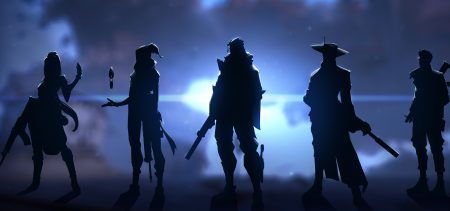Competitive Valorant has so far been synonymous with big Western esports teams like 100 Thieves, Sentinels, G2, and TSM. But the emerging esports scene behind Riot Games’ hit tactical shooter is seeing participation from more than just the NA and EU regions.
Currently, teams from several countries around the world are participating in the Challengers events, which will eventually lead into the international Masters and finally culminate in the worldwide Valorant Champions Tour at the end of the year.
After First Strike laid the groundwork for the global Valorant scene, we got a teaser of how teams from various regions outside of the mainstream NA and EU teams can perform. Can these teams challenge the Valorant status quo?
Here are some teams we think have a good chance of facing the bigwigs this year.
LazerKlan (Latin America)
Why you should look out for them: They can seem pretty chaotic sometimes, which makes them unpredictable. They tend to mix up their strategies every round, and push into multiple angles simultaneously to cause extra confusion.
This Mexican organization has been a mainstay on the leaderboards of Latin American Valorant, managing to secure both First Strike and Challengers 1 for Latin America (North).
While the team is composed primarily of new names on the scene, their coach Billy Anthony “0ng0wa” Reyes has had previous experience in competitive CS:GO — joining the many pros who jumped to Valorant.
Former Overwatch World Cup player Andres “Hellfull” Vallejo doesn’t actually play as a duelist, but he seems to be the team’s ace. Even as a Cypher or a Killyjoy, his name is pretty consistent on the kill feed.
forZe (CIS)
Why you should look out for them: forZe’s approach is characterized by prioritizing information above anything else, making their attacks and defense more decisive once they have everything they need.
This team is an established name in the Eastern European CS:GO and FIFA scenes, and they’ve signed their own Valorant team as well. Their team won First Strike CIS last year, narrowly beating Singularity and other Russian teams. The team has since reigned supreme in the region, winning the LVP Rising Series earlier this year, as well.
Nikita “Coffee” Antsypirovich is often their top fragger, and is usually seen on a duelist role and initiating clashes.
Valorant coach Vladimir “PNUKH” Chervov recently left the team due to personal reasons. Will a new coach allow the team to soar even higher for the Champions Tour? We’re looking forward to forZe securing their Masters slot to see if they can take on the Western European teams.
Team SMG (SEA)
Why you should look out for them: Watch out for Javier “Egoist” Chua’s Cypher too. You’ll usually find him in the right position at the right time to get huge plays.
Team SMG announced their plans for Valorant in mid 2020, and they adopted CS:GO Singaporean team GMCC into their ranks. They might not have won their region’s First Strike tournament or placed first in the recently concluded Stage 1: Challengers, but we think Team SMG’s experience and consistency make their chances of reaching Champions pretty good.
The team plays aggressively with constant rotations, both on attack and defense. They’ve been actively participating in every tournament they can join since August 2020 and have been able to get podium finishes every time.
The MVP of SMG games is usually Sha “ZesBeeW” Mohtar, whose Jett is often the first person in, diving into the site to get kills and control of the map.
Absolute Jupiter (Japan)
Why you should look out for them: Check out Takemori “takej” Shogo’s daring one-man attack on Ascent. If this is what one guy from Absolute Jupiter can do, imagine what kind of plays the whole team is capable of.
Absolute Jupiter has been the team to beat in Japan since Valorant’s release. The team is actually a merger between esports organization Jupiter with Japanese CS:GO team Absolute. The team has focused fire on Valorant, and they’ve been placing first in many A-tier and B-tier tournaments throughout 2020.
The team is well-coordinated and fantastic at utilizing skills to maximize angles and map control. Liquid’s Valorant coach Sliggy called Koji “Laz” Ushida a beast on his review of the First Strike Japan finals, praising his Cypher plays.
Absolute Jupiter runs an unusual double-wall strategy with Phoenix and Viper that has even Sliggy impressed. He says that they “do Viper way better than he does on Ascent.”
Vision Strikers (Korea)
Why you should look out for them: They’re responsible for some of the fastest rounds in Valorant history to date. Just check out this 10-second round. (This got them an operator by Round 2.)
With Vision Strikers constantly dominating their region, they’re practically a shoe-in for one of the two slots for Korea in the Champions Tour. They’ve placed first in every tournament they’ve been a part of, and very few teams in Korea can contest them.
They display a lot of discipline in their games and are known as the kings of Haven in their region, with a 100% win percentage on Haven throughout the first Challengers qualifiers. Goo “Rb” Sang-Min is a very formidable Jett and Kim “stax” Gu-taek has been praised by analysts as one of the best Breach players in the world.
Should Vision Strikers indeed make it to Champions, seeing their precise strategies against teams like 100 Thieves and Sentinels should make for some of the best Valorant action we could ask for.
READ MORE: SUMN FC’s journey from First Strike to Fnatic is inspiring as hell


